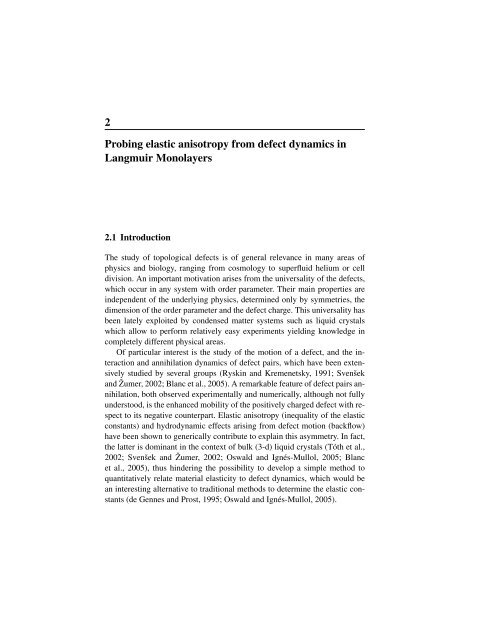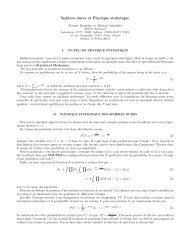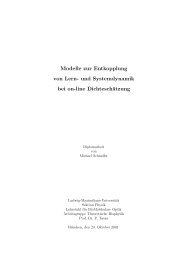Thesis (pdf) - Espci
Thesis (pdf) - Espci
Thesis (pdf) - Espci
You also want an ePaper? Increase the reach of your titles
YUMPU automatically turns print PDFs into web optimized ePapers that Google loves.
2<br />
Probing elastic anisotropy from defect dynamics in<br />
Langmuir Monolayers<br />
2.1 Introduction<br />
The study of topological defects is of general relevance in many areas of<br />
physics and biology, ranging from cosmology to superfluid helium or cell<br />
division. An important motivation arises from the universality of the defects,<br />
which occur in any system with order parameter. Their main properties are<br />
independent of the underlying physics, determined only by symmetries, the<br />
dimension of the order parameter and the defect charge. This universality has<br />
been lately exploited by condensed matter systems such as liquid crystals<br />
which allow to perform relatively easy experiments yielding knowledge in<br />
completely different physical areas.<br />
Of particular interest is the study of the motion of a defect, and the interaction<br />
and annihilation dynamics of defect pairs, which have been extensively<br />
studied by several groups (Ryskin and Kremenetsky, 1991; Svenˇsek<br />
and ˇZumer, 2002; Blanc et al., 2005). A remarkable feature of defect pairs annihilation,<br />
both observed experimentally and numerically, although not fully<br />
understood, is the enhanced mobility of the positively charged defect with respect<br />
to its negative counterpart. Elastic anisotropy (inequality of the elastic<br />
constants) and hydrodynamic effects arising from defect motion (backflow)<br />
have been shown to generically contribute to explain this asymmetry. In fact,<br />
the latter is dominant in the context of bulk (3-d) liquid crystals (Tóth et al.,<br />
2002; Svenˇsek and ˇZumer, 2002; Oswald and Ignés-Mullol, 2005; Blanc<br />
et al., 2005), thus hindering the possibility to develop a simple method to<br />
quantitatively relate material elasticity to defect dynamics, which would be<br />
an interesting alternative to traditional methods to determine the elastic constants<br />
(de Gennes and Prost, 1995; Oswald and Ignés-Mullol, 2005).




